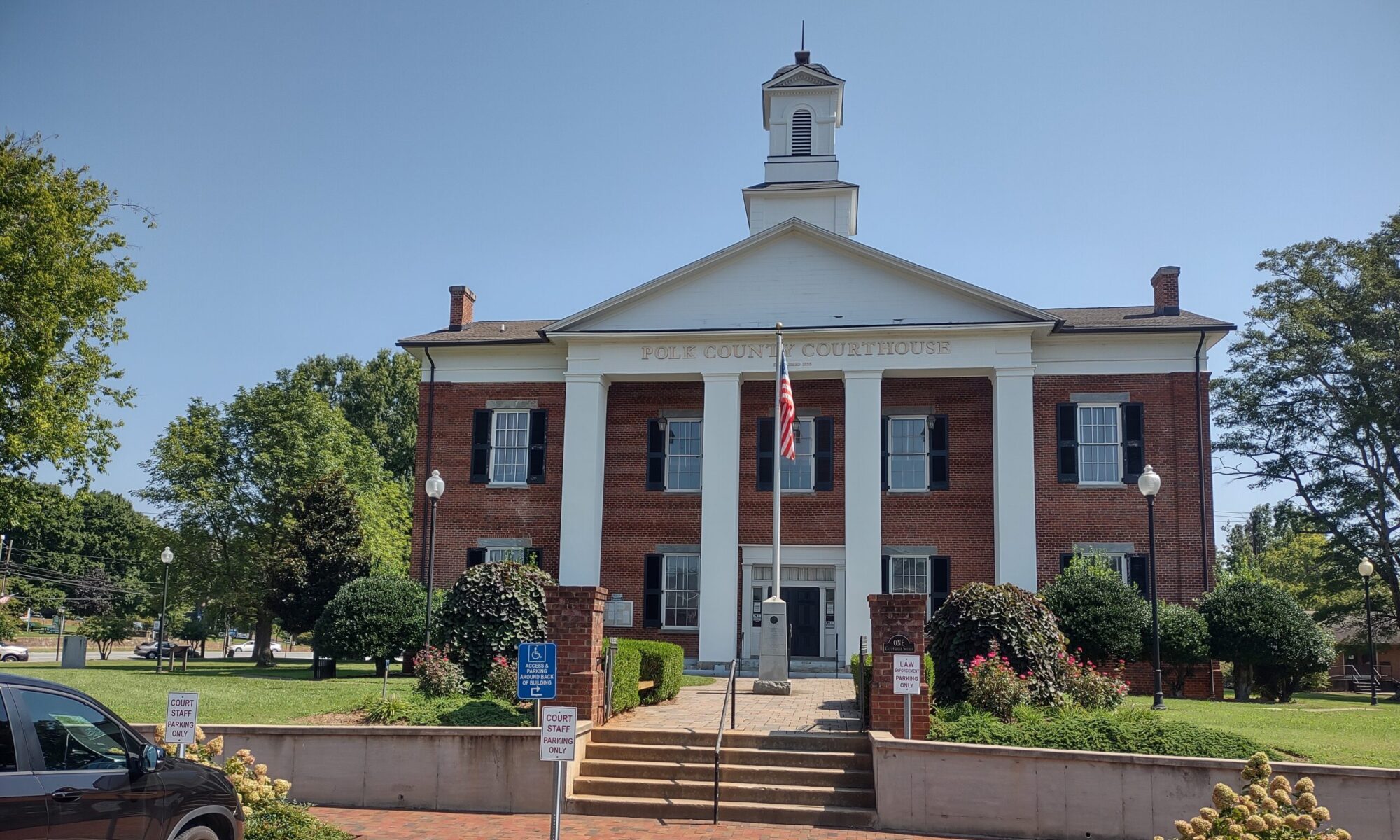
The Wilkes County Courthouse in Wilkesboro, North Carolina was designed by Wheeler, Runge & Dickey in Classical Revival and Beaux Arts style. It was built in 1903.
It was listed on the National Register of Historic Places in 1979. The listing included three contributing buildings on 3.1 acres (1.3 ha). It is located in the Downtown Wilkesboro Historic District.
The Wilkes Heritage Museum is now housed in the historic courthouse. Opened in 2005, the museum’s exhibits include early settlement, military history, industry, agriculture, medicine, communication, education, pottery, entertainment and transportation. The museum also maintains and operates tours of the Old Wilkes County Jail (c. 1859) and the Robert Cleveland Log House (c. 1779), as well as the Blue Ridge Music Hall of Fame. The museum also owns the Thomas B. Finley Law Office. Wikipedia
Old Wilkes County Jail

The old Wilkes Jail, built in 1859 and used as the county jail until 1915, is part of the campus of the Wilkes Heritage Museum in Wilkesboro, NC. Some of the more infamous prisoners to the old jail included Tom “Dooley” Dula and Otto Wood. Tom Dula was arrested for the murder of Laura Foster in 1867 and incarcerated at the old jail until his lawyer, former Governor Zebulon B. Vance, had a change of venue and moved the trial to Statesville. Otto Wood was known as an escape artist and had reportedly escaped from ten prisons by the time he was shot and killed in 1930. The old Wilkes Jail was the only jail Wood never escaped from. He was imprisoned here at the age of 13 for stealing a bicycle. Blue Ridge National Heritage Area
Captain Robert Cleveland Log Home

Cleveland was the son of John Cleveland and Elisabeth Coffey Cleveland. He was born on his father’s plantation in Orange County, Virginia on June 8, 1744; along with several siblings he migrated to western North Carolina sometime around 1769. Those family members who migrated with him were: Benjamin Cleveland, Jeremiah Cleveland, Absalom Cleveland, Larkin Cleveland, Rev. John Cleveland, and a sister Mary who married Bernard Franklin. Franklin’s son Jesse Franklin served as governor of North Carolina.
Cleveland was an acquaintance of Daniel Boone and married a Kentucky girl named Aley Mathis (1750–1791). They had thirteen children. He made his home near the Parsonsville, North Carolina community near Lewis Fork, North Carolina. This area is now known as Purlear, North Carolina as recognized by the US Postal Service. The home he once lived in (Robert Cleveland Log House) is said to be the oldest existing home in Wilkes County and has been moved and restored to a place behind the Old Wilkes Jail Museum in Wilkesboro, North Carolina.
Captain Cleveland was an active patriot and served in the Surry County Regiment (1776-1777) and the Wilkes County Regiment (1777-1781) under his brother, Colonel Benjamin Cleveland. He was in the Battle of Kings Mountain, Battle of Cowpens, and Battle of Big Glades.
In the Cleveland Genealogy there is a quote by another soldier named Dan White saying”… that this brave Captain was due the success of this battle; for in the middle of the conflict, when all were giving away before Ferguson’s bayonets Captain Cleveland stood firm and unmoved, sustaining the charge until Colonel Ben Cleveland could rally the troops and come to his assistance.”
Cleveland also served on the third electoral college of the United States after the war.
Cleveland was buried in the Cleveland Cemetery alongside his wife in a well-marked grave bearing a headstone and markers placed there by the Daughters of the American Revolution. The grave is surrounded by an iron picket fence and is situated near the site of his old home off the Parsonsville Road.
This site is not far from Rendezvous Mountain, famous as the place that Colonel Benjamin Cleveland rallied the Over Mountain Men in preparation for the trek to Kings Mountain in October 1780. The Battle of King’s Mountain was the beginning of the successful end to the Revolution, assuring independence for the United States of America. Wikipedia

